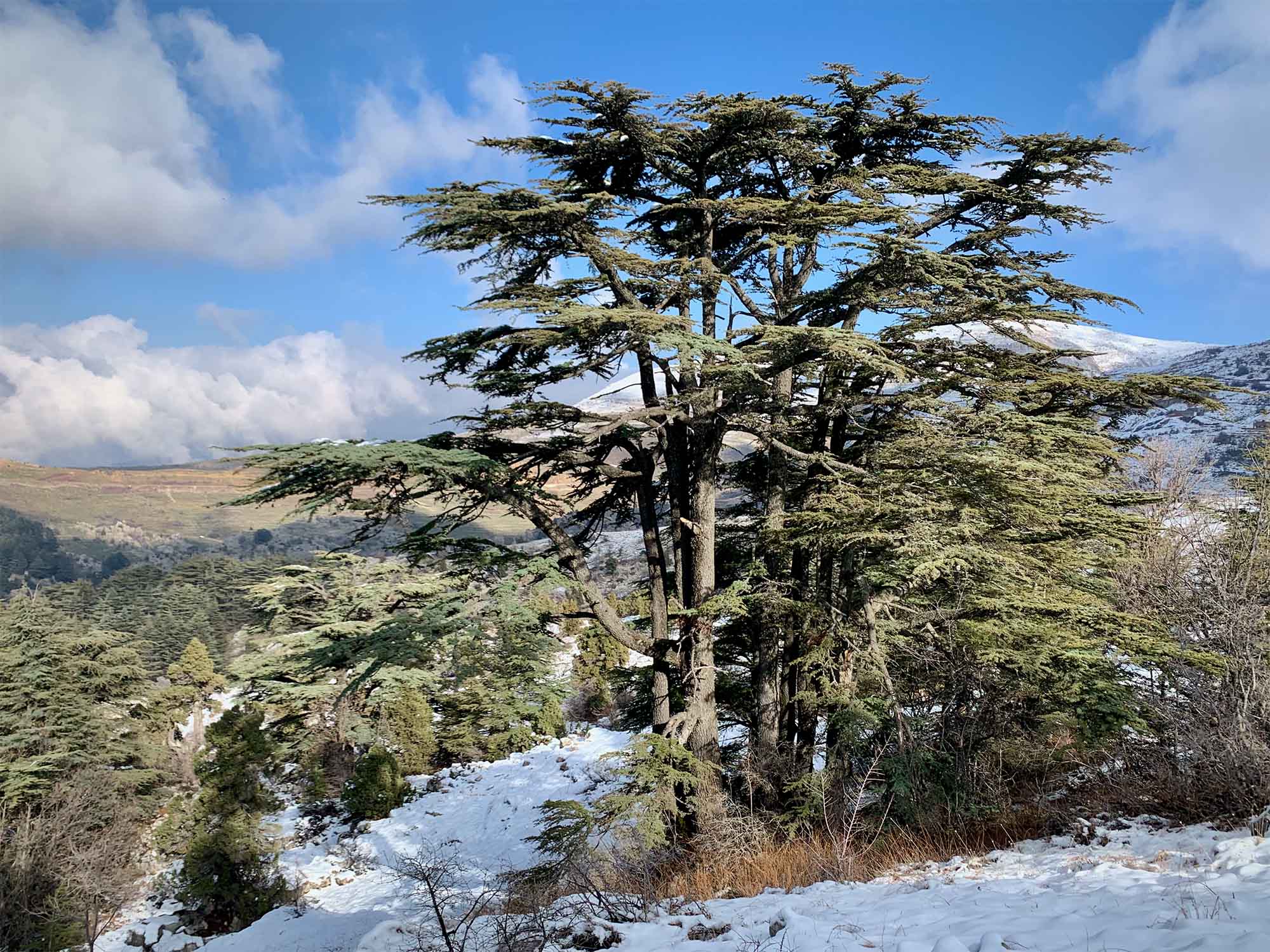Cedrus libani
 cedar of Lebanon
cedar of Lebanon

Cedar of Lebanon is closely related to Atlas cedar. Cedar logs, also pine and cypress, were transported in sailing ships from Byblos on the Lebanese coast to ancient Egypt, which lacked wood, and where attempts at transplantation had been unsuccessful. Later, a straight cedar road was cut through the mountains from Mount Lebanon to the sea, but by this time Byblos had been ruined by economic collapse in Egypt, and the Aramaean ports of Tyre and Sidon had taken over. King Solomon made himself a chariot of “the cedar which is in Lebanon” (and still is today on the flag). Cedar was heavily used for construction, for example in Jerusalem in the Temple of Solomon. The cedar wood that the Israelites used in their wanderings in Sinai would have been a kind of juniper; certainly the ancient Roman cedrus was a juniper – its oil was used as a pesticide to preserve books. In his travels, Odysseus found both Circe and Calypso burning cedar for its fragrance.
Two groups of three on the west side of Meyer Green were specified as cedar of Lebanon by the nursery, but have turned out to be Atlas cedar, with short, tightly clustered bluish needles. Two giants planted in 1927 stand guard at 345 Forest Avenue at Gilman Street in Palo Alto, also reputed to be C. libani. Their identification is disputed; they may be C. deodara. C. libani may be reliably enjoyed only at the San Francisco Botanical Garden, though both specimens there are young and don’t display the dramatic, horizontally reaching habit and flat-topped crown characteristic of this species.
Name derivation: Cedrus – Latin name for cedar; libani – of Lebanon.
About this Entry: The main text of this entry is from the book Trees of Stanford and Environs, by Ronald Bracewell, published 2005. Notes on disputed identification and SFBG added; entry name changed from C. libani libani to C. libani (Sep 2016, SP). Minor edits (Aug 2023, SP).



